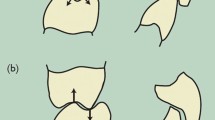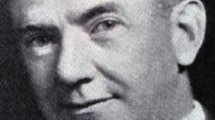Abstract
Some dentists choose to ignore the subject of occlusion, while others propose a set of doctrinal rules. It is of little wonder therefore that it can become a source of confusion and even controversy. This series of two papers aims, firstly, to answer the very simple question of ‘what is occlusion?'. It will put occlusion into the context of the articulatory system because that is the bio-mechanical environment where the majority of dentists do their work. The concept of jaw relation will also be discussed but within the context of this locomotive system. Ideal occlusion will be described but only after answering the question: for whom or what might an occlusion be considered ideal? Although, in the book of which this is the first chapter, he presents what has worked for him during many years as a general dental practitioner, university lecturer and specialist in restorative dentistry, he has tried not to be didactic because he feels that, in a profession, there are no right answers, only the right questions.
Key points
-
The study of occlusion may benefit from more common sense and less dogma.
-
Occlusion is most easily considered within the context of the articulatory system.
-
Dental occlusion and the maxillo-mandibular jaw relationship are best judged against the benchmark of the individual patient's tolerance of them.
This is a preview of subscription content, access via your institution
Access options
Subscribe to this journal
Receive 24 print issues and online access
$259.00 per year
only $10.79 per issue
Buy this article
- Purchase on Springer Link
- Instant access to full article PDF
Prices may be subject to local taxes which are calculated during checkout







Similar content being viewed by others
References
Smith B G. Occlusion: 1. General considerations. Dent Update 1991; 18: 141-145.
O'Carroll E O, Leung A, Fine P D, Boniface D, Louca C. The teaching of occlusion in undergraduate dental schools in the UK and Ireland. Br Dent J 2019; 227: 512-517.
Oxford University Press. Shorter Oxford English Dictionary. Oxford: Oxford University Press, 1973.
Greenfield S. The Private Life of the Brain: Emotions, Consciousness, and the Secret of Self. London: Penguin, 2002.
Ash M M, Ramfjord S P. Occlusion. 4th ed. p 76. Philadelphia: Saunders, 1995.
Gray R J, Quayle A A, Horner K, Al-Gorashi A J. The effects of positioning variations in transcranial radiographs of the temporo-mandibular joint: a laboratory study. Br J Oralmaxillofac Surg 1991; 29: 241-249.
Posselt U. Studies in the mobility of the human mandible. Acta Odontol Scand 1952; 10: 19.
Acknowledgements
The BDJ Editorial Team would like to thank the author of this chapter for granting us permission to republish their chapter within our journal. This chapter was first originally published in Stephen Davies, A Guide to Good Occlusal Practice, BDJ Clinician's Guides, https://doi.org/10.1007/978-3-030-79225-1_1. The second half of this chapter will be republished in an upcoming issue of the BDJ.
Author information
Authors and Affiliations
Corresponding author
Rights and permissions
Springer Nature or its licensor (e.g. a society or other partner) holds exclusive rights to this article under a publishing agreement with the author(s) or other rightsholder(s); author self-archiving of the accepted manuscript version of this article is solely governed by the terms of such publishing agreement and applicable law.
About this article
Cite this article
Davies, S. What is occlusion? Part 1. Br Dent J 236, 447–452 (2024). https://doi.org/10.1038/s41415-024-7173-6
Published:
Issue Date:
DOI: https://doi.org/10.1038/s41415-024-7173-6



